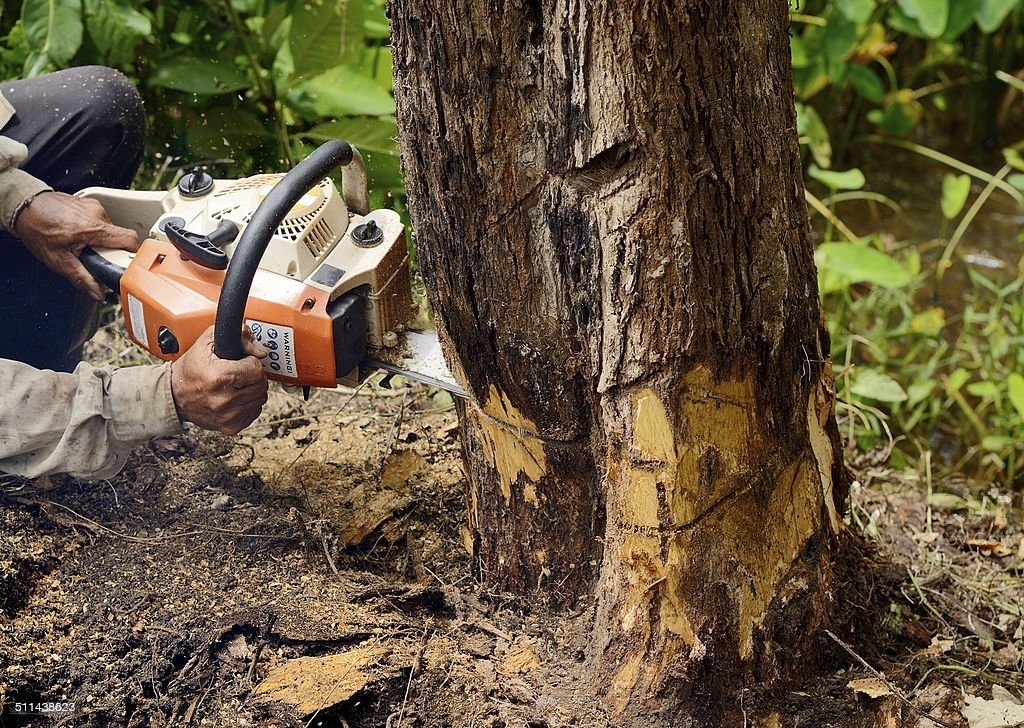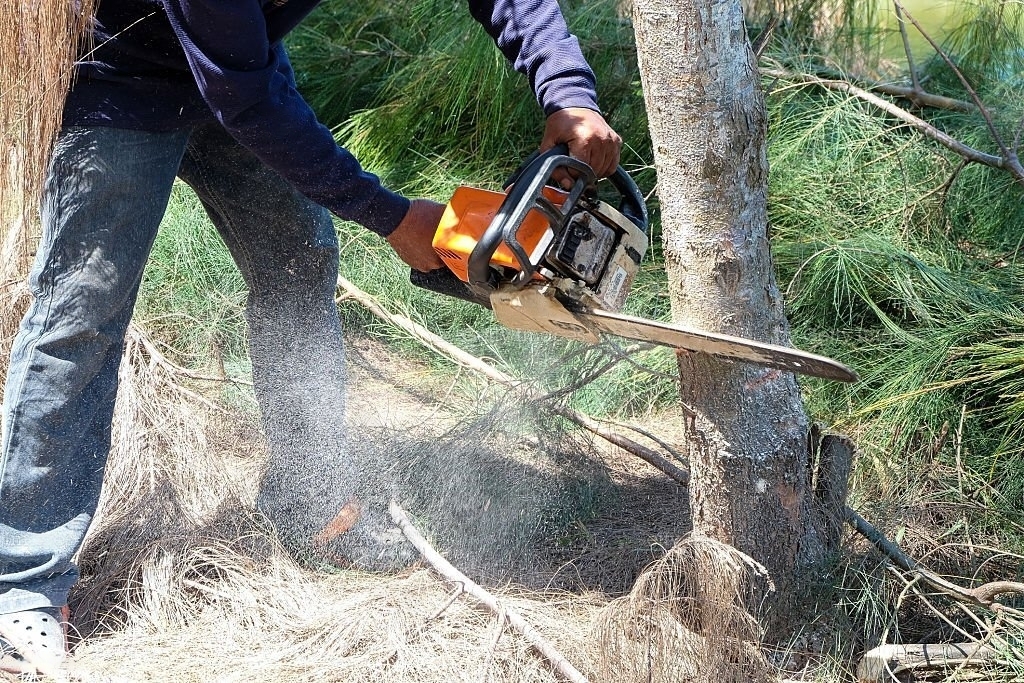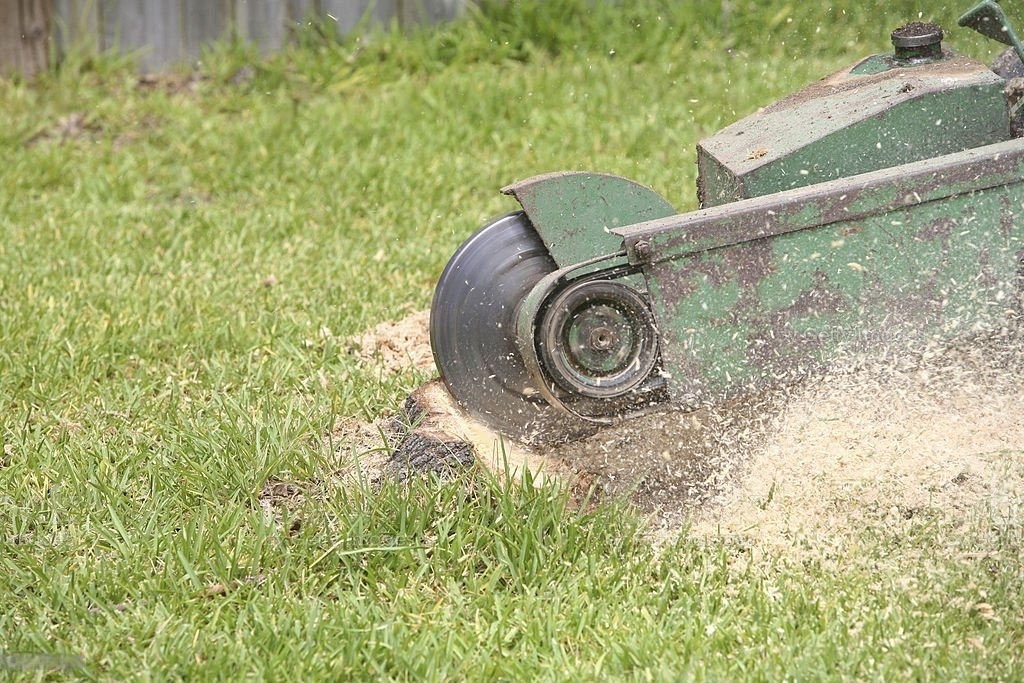# 1 Tree Services & Tree Care Company in Columbus OH
One of the best Tree service Company in Columbus. Team of specialists for Tree removal, Tree trimming & Stump grinding
COLUMBUS & BEXLEY TOP TREE SERVICE
 Arborist Columbus ohio is the town’s only best tree services Columbus Ohio company. With the talent and knowledge required to conduct even the most complicated tree services safely and effectively, our highly skilled staff handles each task with top-of-the-line equipment and techniques. Our customers can rely on us to not only care for their trees but also to maintain the surrounding environment.
Arborist Columbus ohio is the town’s only best tree services Columbus Ohio company. With the talent and knowledge required to conduct even the most complicated tree services safely and effectively, our highly skilled staff handles each task with top-of-the-line equipment and techniques. Our customers can rely on us to not only care for their trees but also to maintain the surrounding environment.
Who Are We? What Do We Do?
As the Arborist Columbus Ohio, relies on upon, we place a premium on safety, which is why we only utilize the most up-to-date and safest equipment and tree care process available. Our big equipment allows us to handle large works on a regular basis. However, there are situations when this equipment may end up causing landscape harm. If you prefer that we exclusively use climbing harnesses in these situations, we will gladly comply as you are in charge of your property. We are able to give outstanding customer service to our clients every day because of our flexibility and innovation.
We are happy to provide service to a wide range of properties, including residential, commercial, investment, and large-scale developments. We are licensed, insured, and we give worker’s compensation to all of our staff because we want to protect our clients from any liability. You have nothing to lose by using our services because we will not accept anything less than your complete satisfaction. We show up when we say we will, and we believe in hard work; we value your business and will not stop until we have earned it. Our prices are reasonable, and we are happy to work on any project, large or little. Please think of us for all of your tree care needs and look for “tree care services near me” on the internet.
Please Read Before Hiring a Arborist Columbus Ohio
When searching for a tree service company in Columbus, most people browse the Internet and key in phrases like: “tree trimming service“, “tree service near me”, “best tree service company“, “tree removal service near me“, “tree care company”, “cheap tree service”, or “tree service Columbus”. Of course, each time they search, they will find a number of businesses to select from; however, how do they know which tree care company is reputable, hones, licensed, insured, and professional?
Columbus Location
338 N Ogden Ave, Columbus, OH 43204,
Why Choose Arborist Columbus Ohio
Here are some of the most important reasons to choose Arborist Columbus Ohio. Compare these factors to those of our competitors to see why our expert tree service is the finest option for both residential and business clients in Columbus Ohio.
Fully Licensed and Insured Tree Company
Because we want to leave you and your family with no liability, we are licensed, bonded, and insured. As another layer of protection for our customers, we provide worker’s compensation benefits to all of our employees. Many things become to be considered for must when you strive to build an unbreakable bond with people.
Affordable Pricing
We guarantee high-quality work at a fair price with complete client satisfaction since we realize you work hard for your money, just like we do. It is our delight to give you the best price possible because our clients keep us going and allow us to accomplish the work that we enjoy. Tree services in Columbus Ohio, is the one that you can rely on. We know the worth of your money and understand the hardships you bear in earning. Every other person has a right to spend his money in a reasonable manner. We make sure that you do not feel like your money is being wasted or you are being overcharged.
Variety of Services - Tree Care
Our team of skilled arborists can handle a wide range of tasks, from chopping down a large tree to cleaning unsightly brush from your yard. We will handle every step of the job from the moment we arrive on your property, right down to raking up the leaves from the removed tree. When we pack up and go, it should be as if we never came; we will always leave your property in better condition than when we arrived. You can rely on us in every manner.
Locally Owned Tree Care Co
We at Arborist Columbus Ohio understand that many of our customers value supporting local companies. We are delighted to be a part of your community, providing you with the peace of mind that comes from doing business with someone you know and trust. Look for “tree care near me” on the internet and give us a call today!
Professional Tree Care Services
We have a team of highly skilled and professional arborists in Ohio. We pride ourselves on our ability to maintain professional standards in all scenarios. We do what we say when we say we’ll do it because we understand that in today’s environment, dependability is important. Customers in Columbus can expect us to have the equipment, experience, and business management operations they require.
Safety – Our First Priority
we place a premium on safety. To avoid the possible hazards associated with tree care, all of our equipment is top-of-the-line and well-maintained, and our team is well-trained in safety standards and protocols. We follow all tree care safety guidelines set out by the International Society of Arborists (ISA) and the Tree Care Industry Association (TCIA). This includes the right use of safety climbing harnesses and the proper operation of the equipment. We make every effort to stay as safe as possible when working on your property.
State-of-the-art Equipment
It is critical that we use the right and high-quality tools and staff available in order to provide the vast range of services that we do. We keep our equipment in good shape by maintaining and servicing it on a regular basis. To ensure safety, efficiency, and great customer service, we hire only the finest and require ongoing education and training.
Free Quote
You will receive a cost estimate the same day that one of our professionals visits your home to inspect the task. We understand that tree work can be an unexpected expense, and it’s vital to know the cost of service ahead of time for budgeting considerations. We endeavor to provide the finest service possible to our customers, and even the smallest details may make a significant difference.
Tree Care Services Cost Consultation
A frequently asked question is “what is the cost of tree care service?” Well the tree service that you require specifies it. The cost of tree removal, tree pruning, and stump grinding varies based on the project’s specifics. These and other elements that influence the cost of Arborist Columbus Ohio are outlined below.
Tree Removal Cost

The cost of our tree removal Arborist Columbus Ohio service is determined by four factors: the location of the tree, its height, its diameter, and its species. The cost of tree removal might range from $400 to $2,000 depending on these factors.
Tree Location
The position of the tree has a significant impact on the cost of removal since it influences the amount of complexity of the work. If the tree is leaning on your house or is tangled in power wires, a certified or a more experienced worker may be required. A work’s location also influences how dangerous it is, and the more dangerous a job is, the more expensive it might be.
Height
The height of the tree affects the cost of the job because it requires more work. A smaller tree, on the other hand, demands fewer people and resources.
Diameter
The diameter of the tree is important for pricing because it dictates the length of time it will take to complete the work. A thicker tree, for example, will take longer to down and will almost certainly need to be cut into smaller portions, necessitating more labor and equipment.
Species
Finally, the tree species matters, because a harder wood takes longer and requires more effort to cut as compared to a softer wood. Furthermore, removing multi-trunked trees is more difficult than removing single-trunked trees.
Tree Trimming Cost

The location of the tree, its height, diameter, species, and the degree of pruning desired/required are all elements that go into determining the price of a tree trimming. As a result of these considerations, tree trimming can cost anywhere from $200 to $1,000.
Tree Location
The location of the tree, just like with removal, is crucial to the cost of service. Trimming a tree in the middle of a field uses fewer resources (time, people, and equipment) than trimming one that is tangled in electricity lines and in contact with a structure.
Height
We must climb higher to trim a tree’s branches as it grows larger. This means that the job will take longer and cost more money to do securely, resulting in a higher service cost.
Diameter
Thicker trees contain more branches thus it will take more time to trim a tree with a bigger diameter.
Species
Some tree species have bigger limbs and more branches than others. Trimming a tree can require a lot of time and resources depending on the type of tree.
Degree of Trimming
The extent to which the tree needs to be trimmed has a significant impact on the job’s cost. If the tree is severely overgrown, shaping it will undoubtedly take more time and work than shaping a tree that receives regular cuts.
Stump Grinding Cost

We consider five major elements when estimating the cost of stump grinding or removal: whether the stump requires grinding or removal, the location of the stump, the age of the stump, the size of the stump, and the tree type. Stump grinding can cost anywhere from $100 to $400, while stump removal costs around $500 and above.
Removal vs Grinding
Depending on your desires and the needs of the specific tree, stumps can be ground or eliminated. Grinding is the more cost-effective option because it saves time and money.
Because the stump is ground down to below ground level, covered with dirt, and left to decay with its roots, it is considerably easier than removal. The entire stump, as well as its roots, must be removed, creating a large hole that must be filled. This is the more expensive option because it necessitates more resources. However, we are pleased to do either service and can assist you in determining which is best for your tree.
Location
The cost of the job is affected by the stump’s position, as a difficult-to-reach stump requires more time and resources to grind or remove. The job will be more complicated and time-consuming if the stump is adjacent to a structure.
Age
The age of the stump affects the pricing because an older stump has a more intricate root structure. This complicates the job and raises the cost of the service in the case of removal.
Size
The larger the stump, the more time and effort it will take to grind or remove it. A tiny stump may take a few hours to remove, whereas a massive stump may take much longer and require many more hands.
Type of Tree
Finally, the tree species matters because, in the case of grinding, for example, softer wood is easier to go through and takes less time to grind. As a result, it is a less expensive job to complete. A hardwood, on the other hand, will take much longer to securely grind.
Tree Removal or Tree Trimming! Which one to select?
To determine whether you require complete removal of the tree or just trimming will be sufficient, you need to consider the following points:
Is There any Hazard Related to the Specific Tree?
If the tree is deemed dangerous, we must then decide whether the problem can be resolved by trimming the tree. Is it merely a single branch contacting your home or another structure on your land if the tree is hazardous because it is making contact with it, or is the trunk itself making contact? Trimming may be the best alternative if only a limb or two need to be cut to remove the hazard, as long as it can be done properly and without affecting the tree’s health.
Is There any Problem Being Caused by Tree?
If the tree is producing a significant problem, it may be necessary to remove it. It may be required to remove it if it is too close to a structure and is causing strain on that structure, resulting in costly repairs. Furthermore, if the tree has been damaged by a storm and is beyond repair, or if it is too large and is preventing grass or other plants from growing, it may need to be removed. Tree Trimming may be the best option if it is not causing any major problems and is merely overgrown.
Value Addition to Your Property
Trimming a tree that is hazardous but is an important element of your landscape aesthetic may be the best option. Regular trimming is sometimes undervalued in terms of its impact on a tree’s health and appearance. Trees are frequently a nuisance since they have gotten sick and require upkeep. If, on the other hand, the tree adds no value and is severely harming your landscape, it should be removed.
Condition of Tree – Is it Dying?
Removal may be the wisest decision if the tree is plainly dying or its health is rapidly deteriorating. A trimming service may be adequate if there are only a few dead branches and it is easy to trim and restore the tree’s vitality.
Services We Offer
We are offering a complete package of Arborist Columbus Ohio . From Trimming to Emergency Tree Removal, we are serving our valuable customers for years and are at the distance of one phone call.

Tree Removal
Tree felling is a hazardous issue. However, tree removal service Tampa FL makes it manageable. We know the way to deal with it. There are times when trees get affected by certain diseases or may get dead. Sometimes, such affected trees cannot get healed and needed to get removed. Infected or dead trees cannot support them. In this regard, getting tree removal services is a must.
We are here to deal with your infected or dead tree issues to save your landscape. Tree removal Columbus OH has all the experienced workers and equipment that can work out the best for you.

Tree Trimming
To promote the productive growth of the tree, it is necessary to get it trimmed properly. Tree trimming Columbus Oh is here to serve you with best. All our experts professionally trim the lower branches, remove green shoots, and make it look attractive.
Cleanliness is another important aspect we keep in mind. After trimming, we clean the whole area as we know cleanliness is foremost. Our tree Redding services will not disappoint you as we save the life of the tree.

Stump Grinding
We have expert level workers for stump grinding service. Stump is something that can end up creating a lot of issues. Small bushes can grow alongside it, or insects and pests can also attack it. So stump grinding or removal is crucial.
Stump grinding Columbus oh has high- quality stump crushers and experts to make it work for you. We mechanically remove the whole stump out from your yard to let space free. After that, you can also grow a new tree over that space. We have professional experts and tools to make it happen, as stump removal is vital to maintain the landscape.

Emergency Tree Service
You may wonder why you would need an emergency tree service. So the actual tree owners know why this is important. Emergency tree service Columbus Oh There are times when your trees reach their age and begin falling. Here you need same day service to prevent damages. It happens once in a blue moon; however, still, you need to be alert enough.
Whenever you feel like your tree is going to fall, or its already fallen, then just give us a call, and we will be there to help you get out of this situation. Our professionals are really quick. They will work, remove the tree along with cleaning out the dirt and grime spread all over your ground.
Getting our emergency services won’t regret you!
Hire Our Top Tree Surgeon in Columbus
We know how to cater to tree felling You should always consider getting rid of pest-infected, diseased, or dead trees. Sometimes, such trees are too much damaged or diseased that can’t heal. Dead trees are unable to support themselves, so tree removal is best you can do. We use all the best practices and high-quality tools for the removal of your tree with safety. After properly removing the tree, we also clean your place as cleanliness is always first.
Why Choose our Arborist In Columbus
- Professional Team with Years of Experience: We are a professional team having years of experience in our work. We ensure that our crews are properly trained and equipped to cater to all sorts of projects. Also, we told our team to high safety and ethical standards to ensure that each project gets completed with professionalism.
- Value Time: We know the value of time. We value our customer’s time and show speedy service. Whenever we get hired for a task, we make sure to get that done as soon as possible.
- Fair Quotations: We know the value of money. So, we always give fair quotations. We always quote fair prices that we know are competitive.
- Various Services: We work with potential commitment and offer you varied kinds of services like consultation and advising.
- Viable Solutions: We always find the most viable solutions to make everything easy to manage
Professional Team with Years of Experience
We have a team of all punctual, professional, and considerate workers who love to do their work. We have a proper crew who knows how to deal with customers. They all work in a way, assuring customer satisfaction.
Our entire team is professional that will surely amaze you by their work. You can call us anytime you want, and we are here to solve your issues with viable solutions.
Ensuring that the work gets done and our clients are happy is our utmost goal. We also give you free estimates and consultations regarding your tree needs. Calling us will make you get to connect to us, not any automatic machine will answer you. This shows how much we value you.

Our Store Information
Sevices Areas
- Worthington, OH
- Hilliard, OH
- Reynoldsburg, OH
- Dublin, OH
- Westerville, OH
- Pickerington, OH
- Pataskala, OH
Business Hours
Monday to Sunday: 24 Hours
Arborist columbus serving in Margate, FL
Get Free Consultations, Contact Us.
Whenever you find the best tree service Erie PA, make sure to consider us. We are here providing you a lot of benefits to choose us. You will get 100% satisfaction with your professional expertise. Our experts will help you with all your tree demands.
We can also give you emergency services if required. Whenever you are in a situation to cut or remove the tree immediately, get in touch, our emergency team will come to you.
Frequently Ask Questions
Tree service companies typically offer a range of services including tree removal, tree trimming and pruning, stump grinding and removal, tree planting, tree health evaluations, and emergency tree services.
- Professional tree service companies have the knowledge, equipment, and experience necessary to safely and effectively handle any tree-related task. Attempting to do it yourself can be dangerous and result in damage to your property or injury.
The cost of tree service can vary depending on the type and size of the tree, the complexity of the job, and the location. It’s best to contact a tree service company directly for an estimate.
Tree removal may be necessary in certain situations, such as if a tree is dead, diseased, or poses a safety hazard. A professional arborist can evaluate the tree and recommend the best course of action.
- A reputable tree service company should have certifications and memberships with professional organizations such as the International Society of Arboriculture (ISA) and Tree Care Industry Association (TCIA). They should also have liability insurance and workers’ compensation insurance.
You can ask for recommendations from friends and neighbors, search online for reviews and ratings, and verify that the company is licensed and insured. It’s also a good idea to check their credentials, such as their certifications and memberships with professional organizations.
